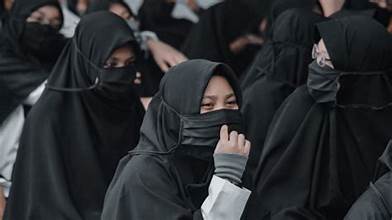Hijab Ban in Schools: Understanding the dynamics surrounding cultural practices and regulations in neighboring countries is crucial for fostering cross-cultural understanding and appreciation. In this article, we delve into the topic of the hijab ban in schools in a neighboring country of India, shedding light on the reasons behind this regulation and its implications for the community.
The Hijab Ban: A Controversial Issue
The hijab, a religious and cultural symbol for many Muslim women, has been a subject of controversy and debate in various parts of the world. In our neighboring country, the issue of banning the hijab in schools has garnered significant attention and sparked discussions among policymakers, educators, parents, and religious leaders.
Exploring the Reasons Behind the Ban
The decision to ban the hijab in schools stems from various factors, including cultural norms, religious interpretations, and educational policies. One of the primary reasons cited by authorities is the desire to maintain secularism and uniformity within the education system. By prohibiting religious symbols such as the hijab, policymakers aim to create a neutral learning environment where students from diverse backgrounds can coexist harmoniously.
Legal Framework and Enforcement
The ban on the hijab in schools is not merely a matter of school policies but also has legal ramifications. In our neighboring country, laws and regulations govern the wearing of religious attire in educational institutions, with strict penalties imposed on those who violate these rules. Parents of students found wearing the hijab in defiance of the ban may face legal consequences, including fines or other forms of punishment.
Impact on Students and Parents
The hijab ban in schools has significant implications for Muslim students and their families. For many, the hijab is not just a piece of clothing but a symbol of their religious identity and cultural heritage. Being deprived of the right to wear the hijab in school can lead to feelings of marginalization, discrimination, and alienation among Muslim students. Likewise, parents may feel frustrated and powerless in the face of such restrictions, especially if they strongly believe in the importance of religious freedom and expression.
Challenges and Resistance
Despite the imposition of the hijab ban, there have been instances of resistance and defiance from students and parents. Some individuals view the ban as an infringement on their fundamental rights and have taken a stand against it through peaceful protests, advocacy campaigns, and legal challenges. These efforts highlight the ongoing struggle for religious freedom and cultural acceptance in our neighboring country.
Promoting Dialogue and Understanding
In addressing the issue of the hijab ban in schools, it is essential to promote open dialogue, tolerance, and mutual respect among all stakeholders. By fostering a climate of understanding and acceptance, policymakers, educators, and community leaders can work together to find common ground and create inclusive environments where individuals of all backgrounds feel valued and respected.
Disclaimer : इस न्यूज़ पोर्टल को बेहतर बनाने में सहायता करें और किसी खबर या अंश मे कोई गलती हो या सूचना / तथ्य में कोई कमी हो अथवा कोई कॉपीराइट आपत्ति हो तो वह [email protected] पर सूचित करें। साथ ही साथ पूरी जानकारी तथ्य के साथ दें। जिससे आलेख को सही किया जा सके या हटाया जा सके ।














